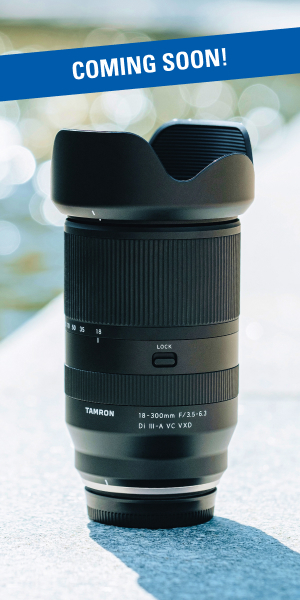La fotografía de deportes de invierno ofrece oportunidades únicas para captar impresionantes imágenes de acción, ya sea de esquiadores bajando por las pistas, de snowboarders en el aire o de escaladores de hielo escalando paredes heladas. Sin embargo, estas emocionantes imágenes van acompañadas de retos como el movimiento a alta velocidad, los entornos con poco contraste y las condiciones meteorológicas adversas.
Para ayudarte a superar estos obstáculos y captar imágenes nítidas y atractivas, esta guía te ofrece técnicas profesionales adaptadas específicamente a la fotografía de deportes de invierno.
Lo que aprenderá en este artículo:
- Cómo elegir la velocidad de obturación adecuada para la acción invernal rápida o lenta
- Por qué el modo ráfaga es esencial para capturar momentos cumbre
- Las ventajas de los teleobjetivos y los zooms como el 70-180 mm y el 150-500 mm de Tamron
- Consejos para manejar la iluminación y el contraste en entornos con mucha nieve
- Cómo preparar el equipo y los ajustes para el frío
Con el equipo y las técnicas adecuadas, estarás preparado para tomar imágenes impactantes incluso en las condiciones invernales más exigentes.
CONSEJO 1: Elija la velocidad de obturación adecuada para la acción invernal

Captar imágenes nítidas y detalladas en la fotografía de deportes de invierno comienza con la velocidad de obturación correcta. Para actividades más lentas, como el senderismo o la escalada, una velocidad de 1/160 puede ser suficiente. Sin embargo, los deportes más rápidos, como el esquí o el snowboard, requieren velocidades de obturación de 1/1000 o más para congelar el movimiento y mantener la nitidez. El sitio Tamron 50-400 mm y el Zoom Tamron 150-500 mm para cámaras sin espejo proporcionan excelentes capacidades de autoenfoque y alcance del zoom, ideales para fotografiar sujetos en rápido movimiento desde una distancia segura.
- Consejo clave: Utiliza velocidades de obturación rápidas (1/1000 o más) para deportes de alta velocidad; las velocidades más lentas, como 1/160, funcionan para escalada o senderismo.
CONSEJO 2: Utiliza el modo ráfaga para captar el momento perfecto

Cuando se trata de deportes de alta velocidad, el tiempo lo es todo. Disparar en modo ráfaga aumenta las posibilidades de capturar ese truco, salto o gol en una fracción de segundo. Este modo permite a la cámara tomar varios fotogramas por segundo, lo que facilita enormemente la selección de la toma más nítida y dinámica durante el posprocesamiento.
- Consejo clave: Activa el modo ráfaga para aumentar tus posibilidades de captar la acción nítida en los momentos de máxima intensidad.
CONSEJO 3: Elija objetivos versátiles para distintas distancias focales
Los paisajes invernales y los eventos deportivos exigen flexibilidad. Tanto si estás fotografiando a un snowboarder en el aire como un paisaje de montaña, disponer de varias distancias focales es crucial. Un objetivo rápido teleobjetivo como el Tamron El 70-180 mm F/2,8 VC G2 le ofrece el rango necesario para alternar entre amplias tomas ambientales e imágenes de acción con encuadres cerrados sin cambiar de objetivo en condiciones de frío.
- Consejo clave: Opta por un zoom flexible, como un objetivo de 70-200 mm o 70-180 mm, para hacer fotos amplias y primeros planos sin cambiar de equipo.
CONSEJO 4: Prepárate para las inclemencias del tiempo y el contraste con la nieve
La nieve puede engañar al sistema de medición de tu cámara, lo que a menudo provoca imágenes subexpuestas o planas. Utiliza la compensación de la exposición (+1 o más) para iluminar las escenas nevadas y ajusta el balance de blancos para evitar los tonos azulados. Además, asegúrate de que tu equipo está sellado o protegido con fundas para resistir la nieve, el viento y las temperaturas bajo cero.
-
Consejo clave: Utiliza la compensación de la exposición, ajusta el balance de blancos y protege tu equipo de la nieve y el frío.
Conclusión: Mejore sus fotografías de deportes de invierno con preparación y precisión
Dominar la fotografía de deportes de invierno requiere algo más que apuntar y disparar. Si conoces los ajustes de tu cámara, utilizas los objetivos adecuados y te preparas para condiciones meteorológicas impredecibles, estarás bien equipado para capturar imágenes estimulantes y visualmente impresionantes. Con la práctica y las técnicas adecuadas, tus fotos de deportes de invierno no sólo congelarán la acción, sino que contarán historias potentes y llenas de energía en la nieve.
Infórmese sobre estas lentes y más en un distribuidor autorizado Tamron o visite la página Tienda TAMRON hoy.

